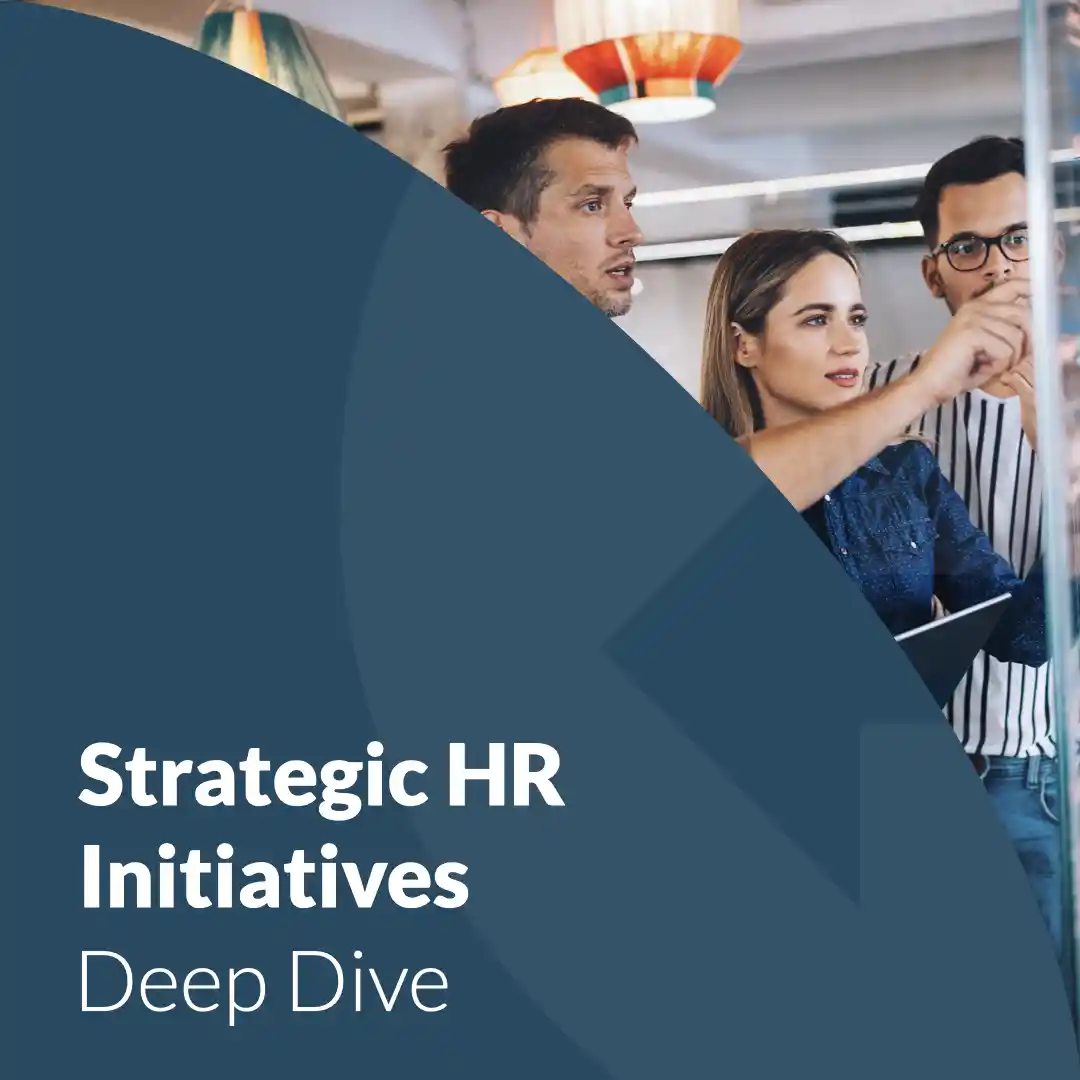Enjoy instant access to a scalable system of proven practices and execution-ready tools. Built to launch strategic HR programs 5X faster!
✓ Enjoy platform access
✓ Create your HR roadmap
✓ View open content in library
✓ Access dozens of practices:
⤷ The HR Strategy program
⤷ Explainers and deep dives
⤷ Supplemental guides
⤷ Insight articles
⤷ Weekly best practices
⤷ And more!
100% Free. No credit card required.
A strategic HR initiative is a targeted and planned effort formulated by human resources professionals to address specific organizational needs, aiming to achieve short or long-term objectives while aligning with the overarching business strategy. These initiatives are born from the execution of strategic HR management planning processes to integrate HR activities with the organization's strategic goals. While many of these strategies emphasize attracting, developing, motivating, managing, and retaining high-performing employees and are derived within the context of assembling a talent management strategy, others engage broader objectives such as culture development, organizational structuring, change adoption, and workforce makeup.
The intrinsic link between strategic HR initiatives and the broader business strategy ensures that the human capital of an organization is not just managed but strategically leveraged to drive organizational success and growth. Identifying strategic HR initiatives is a process that follows four main stages.
Defining Focus Areas: It begins with clarifying strategic business needs and then defining the broad focus areas (such as performance management or leadership development), which originate from pinpointing the critical challenges and opportunities that align with the organization's overarching business goals, as well as its talent strategies and aspirations.
Identifying Best Practices: Once these areas are defined, potential best practices are explored, drawing from industry standards, innovative approaches, and proven methods. This exploration phase is characterized by research, benchmarking, and consultation. After synthesizing this information, specific strategic initiatives can be proposed. Here, Wowledge’s practices can be leveraged to accelerate the process with the guidance necessary to implement new programs from scratch or advance them from an existing stage across different levels of sophistication.
Prioritizing Initiatives: As proposed initiatives get clarified, they should undergo a rigorous evaluation process, where they are prioritized based on their potential impact, feasibility, and alignment with organizational goals.
Adapting Initiatives: The final step sees the chosen initiatives being adapted and tailored to fit the unique context and needs of the organization, ensuring their relevance and effectiveness.
Focusing on the right strategic HR initiatives is critical to shift the human resources function from transactional to performing a strategic leadership role and propel organizations forward as strategically aligned to their business goals. Those initiatives should be carefully curated actions that resonate with an organization's unique identity, challenges, and aspirations.
Most often, these interventions are identified and tailored to meet existing business, operational, and/or talent challenges identified through various investigative methods. Such methods included those associated with Organization Development (OD), performance consulting, monitoring of HR metrics and reports, or revealed through advanced HR analytics (e.g., predictive analyses, statistical modeling or simulations, etc.).
HR initiatives are as varied as the companies they serve and usually have differing levels of complexity and requirements. Below are some tangible examples of strategic HR initiatives that can offer a springboard for ideation when considering engaging in this process. They are grouped by area of focus, and in keeping with Wowledge’s scalable approach, each area includes sample initiatives across increasing levels of sophistication.
Career Development
Change Management
Coaching & Mentoring
Compensation & Rewards
Diversity, Equity, & Inclusion
HR Metrics & Reporting
Leadership Development
Learning & Development
Organizational Design
Performance Management
Recruiting / Talent Acquisition
Succession Management
Workforce Planning
Organizations harness these initiatives based on their needs, industry demands, budget constraints, and technological readiness. Advanced and emerging initiatives often require more significant financial investment and a higher degree of organizational change management.
Strategic HR initiatives need to be deliberately aligned with and support the broader goals and objectives of the business. There are diverse dimensions to ensure they are specific and targeted based on the context of each organization.
As a company defines its business strategy, each function must align its objectives and actions to support its strategic goals. Talent management strategy is a key process that the HR function follows to accomplish this directive by identifying priorities and setting up plans to advance talent management practices.
An important step in the development of a comprehensive HR strategy is researching and determining factors that are currently (or projected to be) operating in an environment both external to the company and within it.
HR leaders convene in a group or individual setting to assign the goals to be taken as personal objectives for both team HR Strategic Planning and sub-team/individual performance management purposes.

Enjoy instant access to a scalable system of proven practices and execution-ready tools. Built to launch strategic HR programs 5X faster!